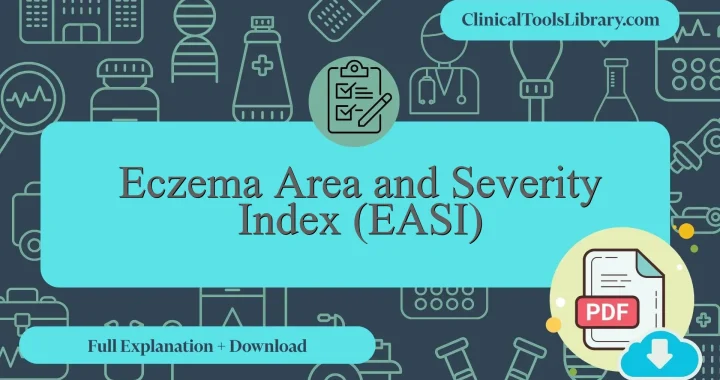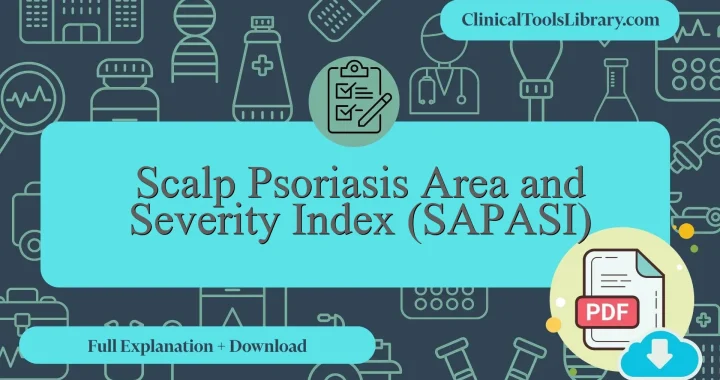In this article, we explain everything you need to know about the Leeds Revised Acne Grading System. We will cover the aspects it evaluates, the target population, a detailed step-by-step explanation, and how to interpret its results. Additionally, we will dive into the scientific evidence supporting this tool (diagnostic sensitivity and specificity) in clinical assessment. You will also find official and unofficial sources available for download in PDF format.
What does the Leeds Revised Acne Grading System assess?
The Leeds Revised Acne Grading System is a clinical tool designed to evaluate the severity and extent of acne vulgaris by assessing lesion counts and inflammatory activity across designated facial regions. Its primary purpose is to provide a standardized method for acne assessment, facilitating consistent classification of disease severity, which supports treatment decisions and monitoring of therapeutic outcomes. This grading system is often utilized alongside other established metrics such as the Global Acne Grading System and the IGA acne score to enhance the accuracy of the acne severity score and guide evidence-based clinical management.
For which type of patients or populations is the Leeds Revised Acne Grading System intended?
The Leeds Revised Acne Grading System is primarily indicated for patients presenting with mild to moderate acne vulgaris, facilitating a detailed assessment of facial lesions. It is most useful in outpatient dermatology clinics where standardized quantification of lesion type and distribution enables objective monitoring of treatment efficacy over time. This system complements other standardized tools such as the Global acne grading system and IGA acne score, offering enhanced sensitivity for evaluating inflammatory and non-inflammatory lesions in clinical trials and routine practice. Its application supports consistent acne assessment by providing a reproducible acne severity score, which is essential for tailoring therapeutic regimens and comparing outcomes across populations.
Step-by-Step Explanation of the Leeds Revised Acne Grading System
The Leeds Revised Acne Grading System consists of a structured assessment involving 10 items that evaluate both inflammatory and non-inflammatory lesions. The healthcare professional begins by examining the patient’s face, chest, and back to identify the number and type of acne lesions, categorizing them into comedones, papules, pustules, and nodules. Each item is scored using a numerical scale ranging from 0 to 3, where 0 indicates absence and 3 reflects a severe presentation. The system incorporates both qualitative and quantitative measures, including lesion counts and morphological characteristics. After tabulating scores for all regions, the total cumulative score provides a standardized measure of acne severity, guiding appropriate treatment planning.
Leeds Revised Acne Grading System PDF: Downloadable Original & English Versions for Assessment
Below are downloadable resources featuring both the original and English versions of the Leeds Revised Acne Grading System available in PDF format. These documents serve as essential tools for accurate acne assessment, facilitating consistent evaluation of acne severity across diverse patient populations. Clinicians may utilize these standardized grading systems alongside other measures such as the Global acne grading system PDF and the IGA acne score to enhance diagnostic precision and treatment planning.
How to interpret the results of the Leeds Revised Acne Grading System?
The Leeds Revised Acne Grading System quantifies acne severity by assessing lesion counts across specific facial zones and applying a weighted formula: Acne Score = (Comedones × 1) + (Papules × 2) + (Pustules × 3) + (Nodules × 4). Reference values categorize severity as mild (score 0–15), moderate (16–30), or severe (>30), facilitating standardized evaluation. Healthcare professionals utilize these scores to objectively monitor disease progression and tailor treatment strategies accordingly. For example, a patient presenting with 5 comedones, 8 papules, 3 pustules, and 1 nodule would have a score of (5×1) + (8×2) + (3×3) + (1×4) = 5 + 16 + 9 + 4 = 34, indicating severe acne, which may warrant systemic therapy. This method enables consistent communication across clinical settings and supports evidence-based management of acne vulgaris.
What scientific evidence supports the Leeds Revised Acne Grading System ?
The Leeds Revised Acne Grading System was developed in the early 1990s as an enhancement of previous acne severity assessments, aiming to provide a standardized and reproducible method for clinical evaluation. Validation studies have demonstrated its reliability in grading both inflammatory and non-inflammatory lesions of acne vulgaris across diverse patient populations. Comparative analyses with other grading tools, such as the Global Acne Grading System, have confirmed its sensitivity and specificity in detecting changes over time, which is critical for therapeutic monitoring. Furthermore, the system’s scientific foundation is supported by histopathological correlations and longitudinal clinical trials, underpinning its role in both research settings and routine dermatological practice.
Diagnostic Accuracy: Sensitivity and Specificity of the Leeds Revised Acne Grading System
The Leeds Revised Acne Grading System demonstrates a sensitivity of approximately 85% in detecting clinically significant acne vulgaris, ensuring effective identification of moderate to severe cases. Specificity values have been reported near 90%, indicating a strong ability to distinguish between acne and other dermatological conditions without overdiagnosis. These performance metrics support its reliability as a standardized tool for quantifying acne severity in both clinical and research settings.
Related Scales or Questionnaires
The Leeds Revised Acne Grading System is complemented by several other scales and tools, including the Global Acne Grading System (GAGS), Acne Severity Score, and the Investigator’s Global Assessment (IGA) acne score, all of which are thoroughly explained and available for download on ClinicalToolsLibrary.com. The GAGS offers a rapid, site-specific assessment which enhances reproducibility but may underrepresent lesion severity in certain facial regions. The IGA acne score is widely adopted in clinical trials due to its simplicity but may lack the nuance needed for detailed acne assessment. The Acne Severity Score provides a composite evaluation incorporating lesion counts and severity but requires training to ensure inter-rater reliability. Each tool presents a balance of ease of use versus detailed granularity, similar to the Leeds system. Users can find comprehensive descriptions and downloadable versions, such as the Global acne grading system PDF, on the website to facilitate clinical application.




